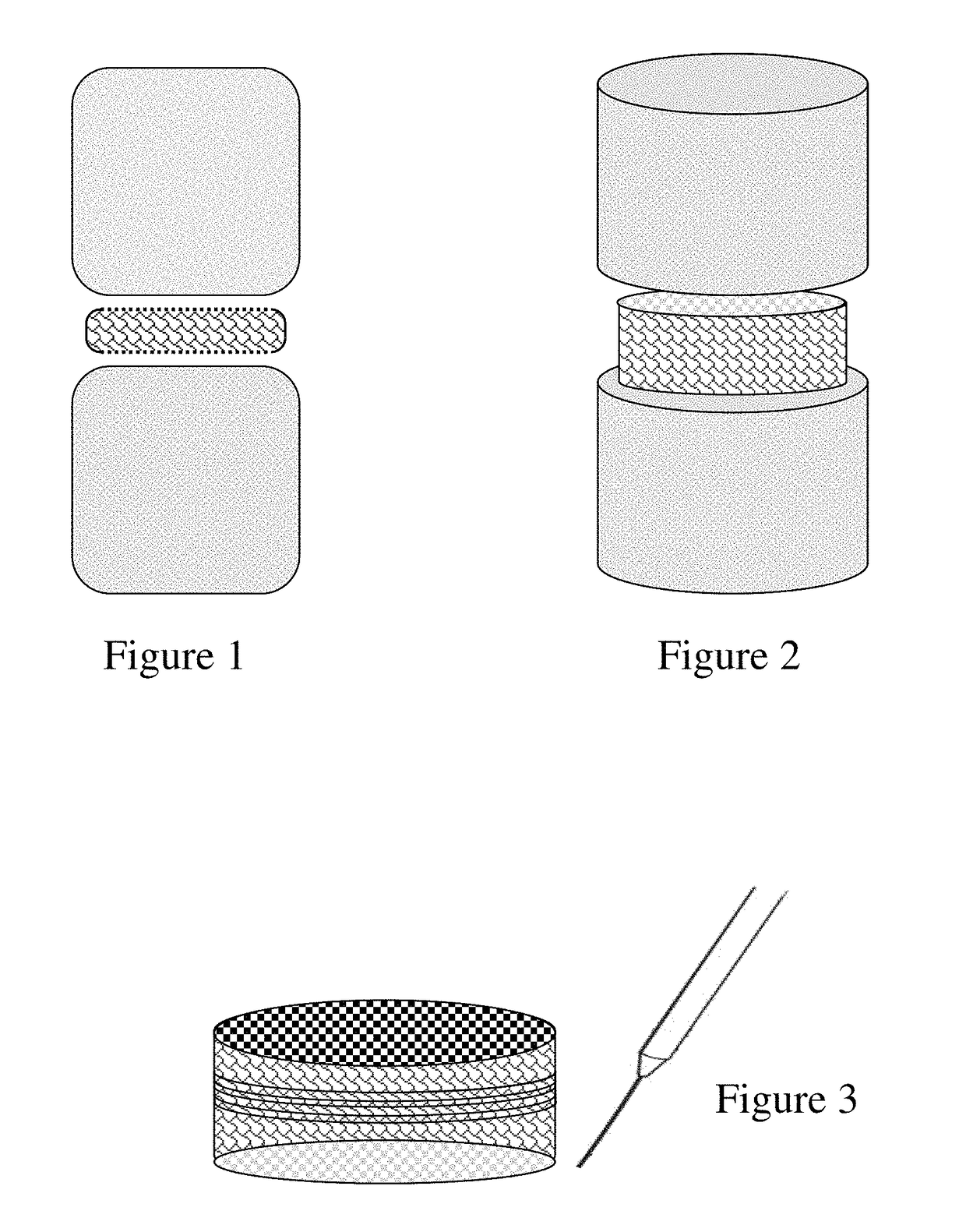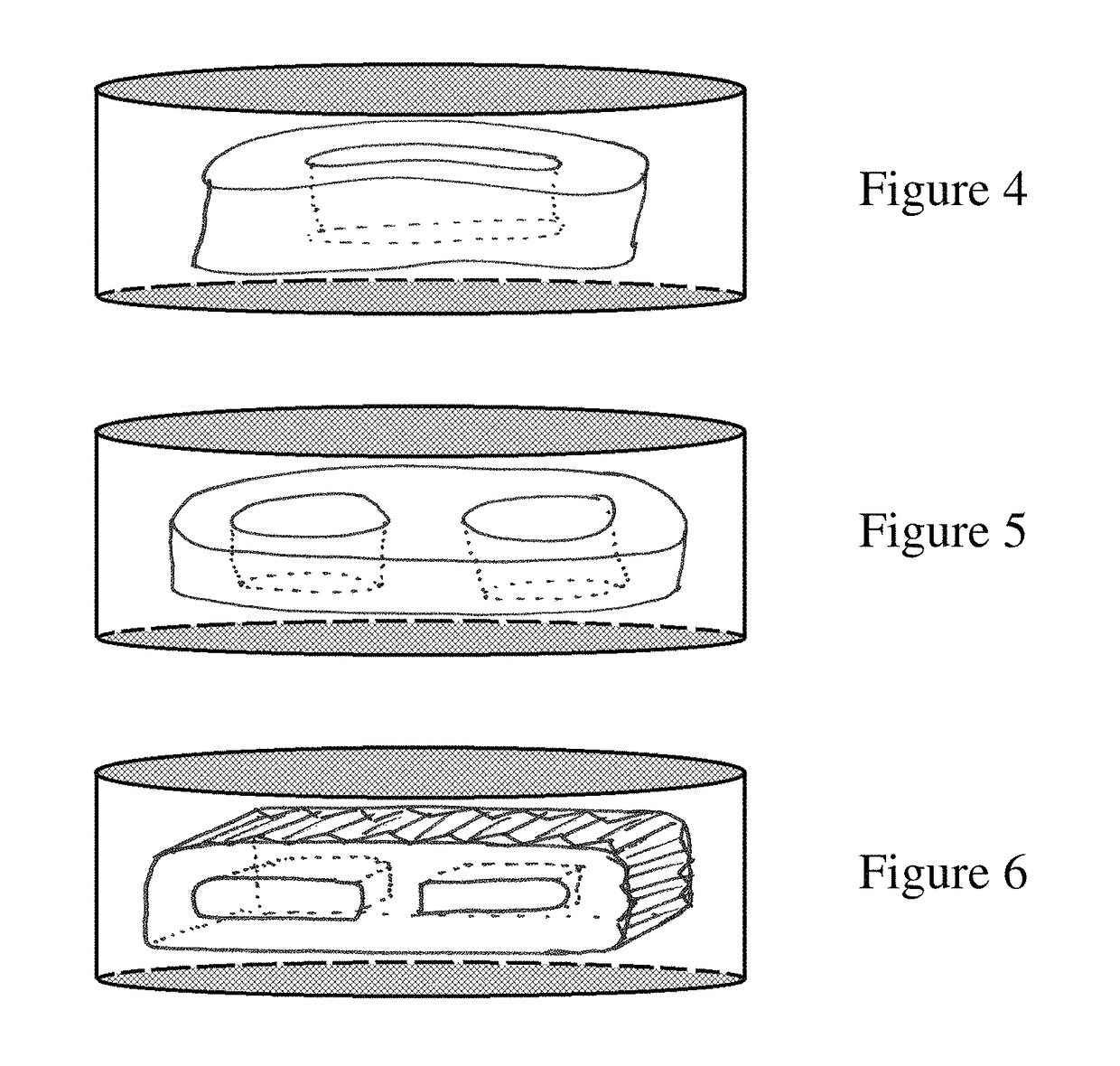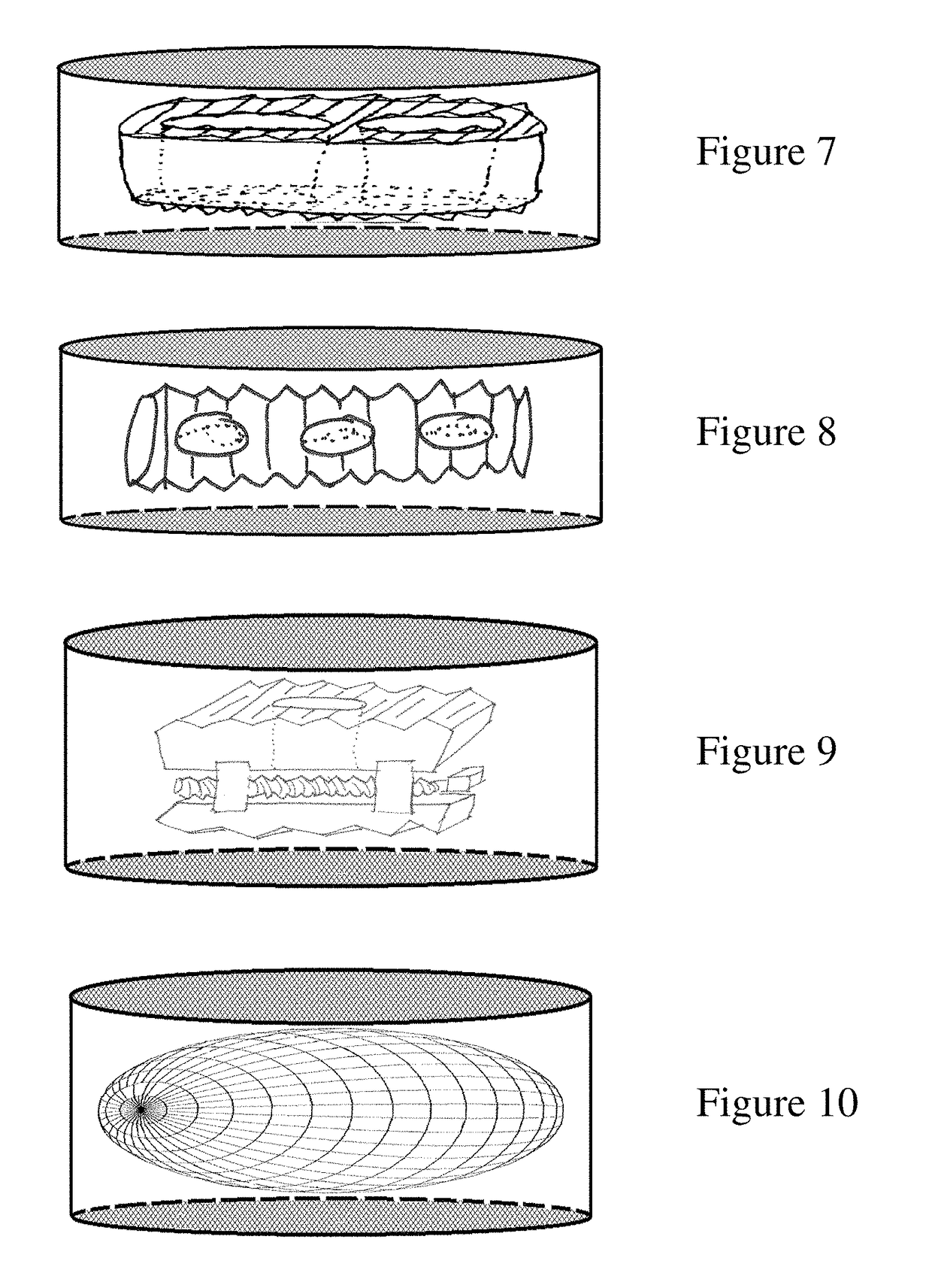Sac for use in spinal surgery
a sac and spinal surgery technology, applied in the field of medical technology, can solve the problems of inability to achieve the desired size, shape, and height of the sac, and achieve the effect of convenient use, safety and effectiveness
- Summary
- Abstract
- Description
- Claims
- Application Information
AI Technical Summary
Benefits of technology
Problems solved by technology
Method used
Image
Examples
Embodiment Construction
[0033]I. Sac
[0034]The present invention may be used to fuse any sections of the spine, such as vertebra or sections of vertebra. These sections of the spine can be located at any part of the spine, such as the lumbar spine, the cervical spine, or the thoracic spine. The invention can also be used to fuse adjacent regions of the spine. In one embodiment, the invention can be used to fuse sections of the cervical spine. For patients with severe degenerative illnesses, the method can be used to treat multiple sections of the spine and thereby provide a measure of relief to the patient.
[0035]The sac will normally be implanted in the spine during a surgical procedure, such as during an arthroscopic or endoscopic procedure. Arthroscopic surgery is a minimally invasive surgical procedure in which a physical examination of the interior of a joint is performed using an arthroscope, a type of endoscope that is inserted into the joint through a small incision.
[0036]In contrast to traditional s...
PUM
| Property | Measurement | Unit |
|---|---|---|
| height | aaaaa | aaaaa |
| diameter | aaaaa | aaaaa |
| diameter | aaaaa | aaaaa |
Abstract
Description
Claims
Application Information
 Login to View More
Login to View More - R&D
- Intellectual Property
- Life Sciences
- Materials
- Tech Scout
- Unparalleled Data Quality
- Higher Quality Content
- 60% Fewer Hallucinations
Browse by: Latest US Patents, China's latest patents, Technical Efficacy Thesaurus, Application Domain, Technology Topic, Popular Technical Reports.
© 2025 PatSnap. All rights reserved.Legal|Privacy policy|Modern Slavery Act Transparency Statement|Sitemap|About US| Contact US: help@patsnap.com



